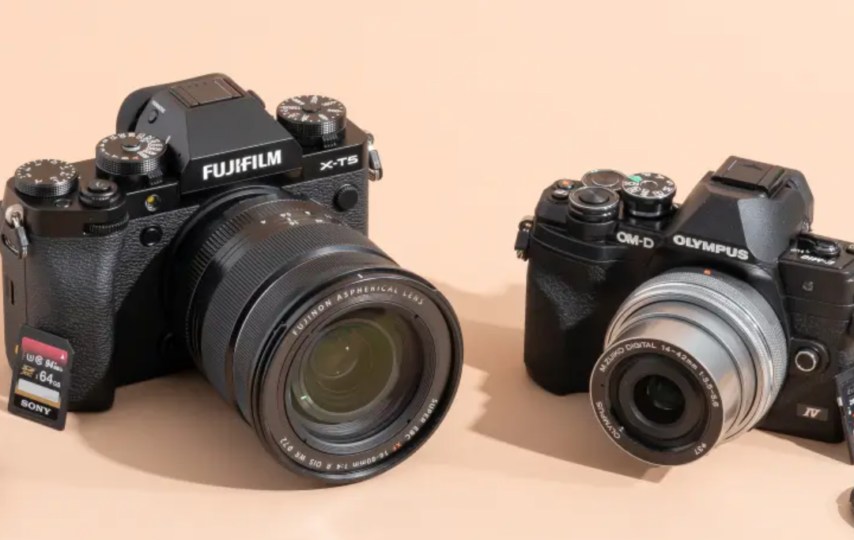More than ten years have passed since the debut of mirrorless cameras. These cameras use an electronic viewfinder (EVF) instead of the optical viewfinder and mirror assembly found in typical DSLR cameras. It preserves image quality while enabling a smaller form factor.
DSLR performance was superior to that of early mirrorless cameras. However, modern mirrorless cameras are far superior to their DSLR counterparts in many aspects because of advancements in sensor and processor technology. Let’s examine some of the most significant variations that exist across mirrorless camera nowadays.
Small Size Without Sacrifice
The primary benefit of mirrorless cameras over DSLRs is their smaller size. The body of a camera can be made substantially smaller by manufacturers by eliminating the mirror and optical viewfinder. It greatly increases the portability and convenience of carrying mirrorless cameras throughout the day.
Mirrorless cameras now provide image quality that is on par with or better than full-frame DSLRs, despite their smaller size. Thanks to developments in sensor technology, full-frame and APS-C mirrorless cameras can now capture photos with remarkable dynamic range, low-light performance, and detail. The newest mirrorless cameras frequently perform better than entry-level full-frame DSLRs.
Superior Autofocus Capabilities
Recent years have witnessed enormous advancements in autofocus technology, with mirrorless cameras leading the way. Modern mirrorless AF systems can attain focus speeds, accuracy, and tracking skills that surpass even high-end DSLRs by processing image sensor data.
These days, more mirrorless cameras have sophisticated subject-tracking features that focus on objects like eyes or faces. Photographers may effortlessly snap tack-sharp portraits with real-time Eye AF. These days, mirrorless autofocus systems can focus on any subject since they have hundreds of focus points spread around the frame.
Furthermore, manual focus becomes just as exact as autofocus with the use of focus peaking and magnification tools. Focus is entirely under the creatives’ hands in both stills and videos. All things considered, mirrorless cameras’ focusing is a major advantage that offers them a competitive edge in action, sports, wildlife, and portrait photography.
In-Body Image Stabilization’s Ascent
Instead of using lenses for image stabilisation, manufacturers have incorporated advanced image stabilisation inside the bodies of mirrorless cameras to make up for their smaller size. This is called in-body image stabilisation (IBIS), and it makes it possible to employ stabilisation with any lens—even non-stabilized optics from decades ago.
IBIS significantly outperforms lens-based stabilisation, mitigating camera shake up to 5–7 stops. The advantages of handheld photography are obvious, particularly when taking pictures without a tripod in low light. Additionally, IBIS allows for continuous video recording when moving or walking. IBIS is a real game-changer for many photographers accustomed to lens-based stabilisation.
Using Video to Rethink Visual Storytelling
Although still photography has its place, mirrorless cameras have revolutionised visual storytelling by enabling all makers to use DSLR-calibre video capabilities. IBIS, sophisticated focusing, and integrated video recording enable 4K/60p footage that is as smooth as that produced by professional cinema cameras.
Colour grading and sophisticated post-production are made possible by HDMI output, log profiles, and 10-bit colour depth. For both SDR and HDR output, hybrid log gamma (HLG) maintains highlight and shadow detail. Mirrorless cameras give content creators access to professional video camera tools with features like focus peaking, zebra patterns, and audio adjustments.
Filmmakers, vloggers, and YouTubers now have an all-in-one tool for producing high-quality still images and videos. The smooth transitions between still and video modes allow the narrative to flow. Mirrorless cameras are perfect for run-and-gun documentary-style recording because of their dual card slots, high battery life, and weather sealing. All things considered, mirrorless cameras’ video proficiency is revolutionising visual storytelling in all genres and formats.
Conclusion
Mirrorless cameras, with their special combination of portability and versatility, have revolutionised the field of digital image. Their small size, sophisticated focusing, and video features have completely changed the possibilities for producers. Future visual storytelling will undoubtedly be influenced by these inventive cameras as mirrorless technology continues to advance quickly.




